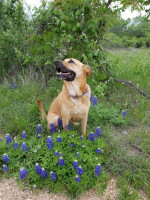Hops
|
Amount
|
Variety
|
Cost
|
Type
|
AA
|
Use
|
Time
|
IBU
|
Bill %
|
|
0.75 oz |
Willamette0.75 oz Willamette Hops |
|
Pellet |
4.5 |
First Wort
|
90 min |
17.39 |
37.5% |
|
0.50 oz |
Willamette0.5 oz Willamette Hops |
|
Pellet |
4.5 |
Boil
|
15 min |
4.89 |
25% |
|
0.50 oz |
Willamette0.5 oz Willamette Hops |
|
Pellet |
4.5 |
Boil
|
5 min |
1.96 |
25% |
|
0.25 oz |
Willamette0.25 oz Willamette Hops |
|
Pellet |
4.5 |
Whirlpool
|
0 min |
0.84 |
12.5% |
|
2 oz
/ $ 0.00
|
Hops Summary
|
Amount
|
Variety
|
Cost
|
IBU
|
Bill %
|
|
2 oz |
Willamette (Pellet) 1.9999999954251 oz Willamette (Pellet) Hops |
|
25.08 |
100% |
|
2 oz
/ $ 0.00
|
Mash Guidelines
|
Amount
|
Description
|
Type
|
Start Temp
|
Target Temp
|
Time
|
|
16 qt |
|
Strike |
164.4 °F |
154 °F |
60 min |
|
4 qt |
Poured over grains in bag |
Sparge |
170 °F |
160 °F |
-- |
|
4 qt |
Used to dissolve the bochet, boiled and then added to wort after boil and before chilling |
Top Off |
-- |
-- |
-- |
Priming
|
Method: co2
Amount: -15.4 psi
Temp: 38 °F
CO2 Level: 0 Volumes |
Target Water Profile
Balanced Profile II
Notes
Buckwheat honey is a placeholder for bocheted wildflower honey, and the regular honey addition will be a half pound of pecan smoked wildflower honey as well as a pound of regular wildflower honey.
-------------------------------
Actual OG: 1.088
Actual FG: 1.014
-------------------------------
Brew Day and Fermentation Notes:
- Mashed in a bit high, @156f
- Mash tun was not large enough to hold grain bill and full water volume at once, so 1 gal was reserved to rinse the grains in bag after the mash (the listed sparge) Ended up with a much lower than expected pre-boil gravity (reflected by the efficiency number), so will change this next time.
- Had trouble keeping a boil on the stovetop, but this was expected and part of the reason for the extended (90 min) boil. This is reflected in the lower than expected evaporation rate as well.
- Used a thick nylon bag as the hop bag, but the material may have been too thick, and the total volume of hops was too large for the bag; by the end of the boil the bag was very much overfull. Will use a spider or several smaller, thinner, bags next time.
- Started the Bochet at around the 60 min mark during the boil, and carmelized until very dark and the first wisps of smoke began to rise. Dissolved the bochet (outside, with safety goggles - seriously, be safe) with the remaining gallon of water, brought the mixture to a boil, and then added it to the boiling wort around the 15 min mark.
- Also, managed to overflow the bochet pot when the honey first reached a boil; it nearly killed the range and made for one hell of a cleanup job. Keep in mind you need at least 6x the volume of honey as headspace during a bochet.
- Wildflower and Pecan (cold) smoked honeys were added to the carboy just prior to the yeast pitch; the relatively warm wort made dissolving the honeys quick and painless.
- The Fermaid O was added in one batch just before the pitch as, based on my reading, I feared the gravity would drop too quickly to time additions. This worked out just fine, but based on this batch timing additions probably wouldn't be that difficult.
- Significantly underpitched the yeast (perhaps 25-30 ml), and pitched at slightly above 90f. Fermentation was carried out in a glass carboy, with insulated wrapping, placed above a heating pad connected to an inkbird; temperatures were consistent (88f-92f) throughout fermentation. After 6 days activity had ceased, and on the seventh day the carboy was cold crashed for ~6hours and then kegged that evening. While this fermentation was quick, it was also clean - without the esters the strain is noted for or any off flavors. In the future I will probably pitch the entire pack though, just to ensure I don't end up with the off-flavor horror stories I've read about (of course I ran across those stories after the pitch).
- Very important: scream at the spirits as you pitch your yeast, as is traditional, to ensure a good fermentation and un-possessed batch.
------------------------------
Tasting Notes:
This stuff turned out way better than it had any right to be - especially since it was a shot in the dark using pretty much exclusively ingredients I'd never touched before. Toasty caramel, lightly burnt (in a good way) sugar, and sweet round nuttiness dominate, with touches of raisin and prune in the background, before finishing with a Guinness-like tang (presumably from the honey). The hops are very much in a supporting role here; pleasant, but barely noticeable and serving mainly to balance the dominant sweet flavors. Body is medium/medium-light, and the alcohol is noticeable only by a mild warmth and slight perceptibility on the nose, despite the significant proof.
Everyone who has tried this without knowing the abv beforehand has guessed in the ~4% range. Score one for Hornindal, I guess.
Will make this again, and see how improvements in process change the character of the final product; still not sure what changes to the actual recipe I'll make.

Last Updated and Sharing

- Public: Yup, Shared
- Last Updated: 2019-12-17 21:30 UTC
For quick copying and pasting to a text based forum or email.
Click the Download as HTML file button below.
Recipe costs can be adjusted by changing the batch size. They won't be saved but will give you an idea of costs if your final yield was different.
|
Cost $ |
Cost % |
| Fermentables |
$ |
|
Steeping Grains
(Extract Only) |
$ |
|
| Hops |
$ |
|
| Yeast |
$ |
|
| Other |
$ |
|
| Cost Per Barrel |
$ 0.00 |
|
| Cost Per Pint |
$ 0.00 |
|
| Total Cost |
$ 0.00 |
|
Discussion about this recipe:
